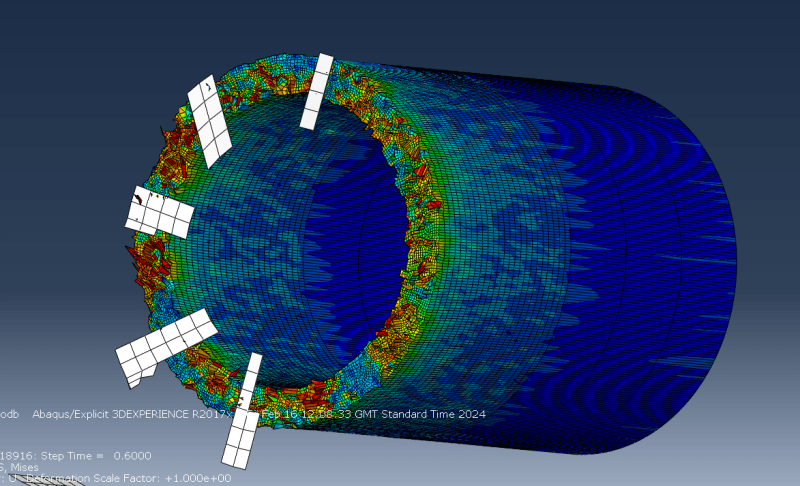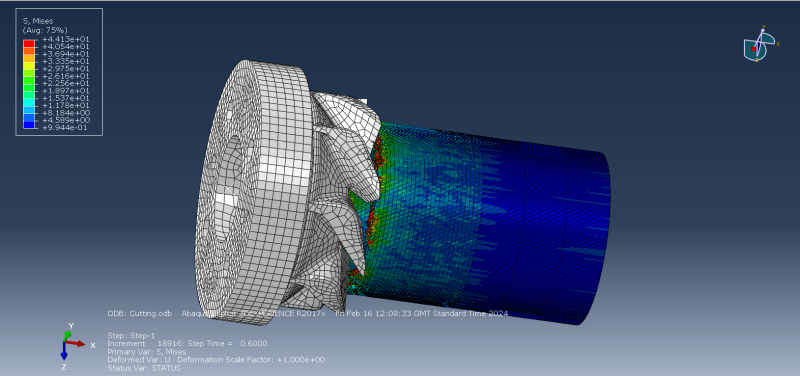Hello, I’m trying to simulate the cutting process of HDPE, and I’ve used ductile damage and shear damage initiation with values found in papers. The model works and the elements get deleted as the cutter progresses, however I am not noticing any chip formation with no chips flying off. There is noticeable plastic deformation however the elements just get deleted, could this be due to not enabling a specific parameter or having to use different criteria? I’m also using fracture energy as the damage evolution.
Tek-Tips is the largest IT community on the Internet today!
Members share and learn making Tek-Tips Forums the best source of peer-reviewed technical information on the Internet!
-
Congratulations MintJulep on being selected by the Eng-Tips community for having the most helpful posts in the forums last week. Way to Go!
HDPE Damage Criteria
- Thread starter antchr
- Start date


